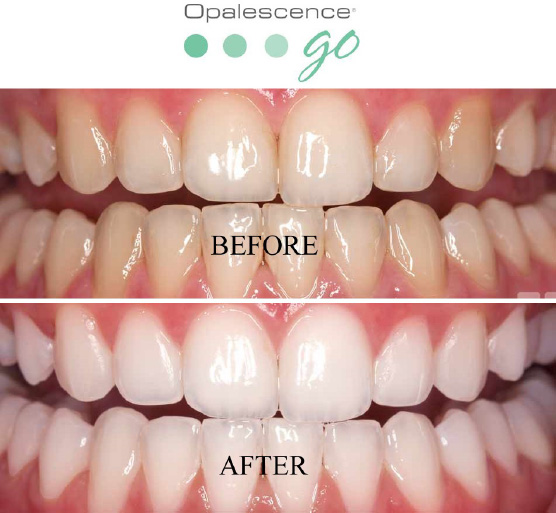Tooth decay can sneak up on you, but understanding its process empowers you to take control of your dental health. It all starts with plaque, that pesky, sticky film that gathers on your teeth after eating sugary or starchy foods. The bacteria in this plaque produce acids that erode your tooth enamel, leading to vulnerable spots. If these weak areas aren’t cared for, they can turn into cavities, which typically require professional treatment to fix. By grasping how tooth decay unfolds, you can appreciate the importance of good oral hygiene and regular dental check-ups, ensuring your smile stays bright and healthy. Have you ever wondered what really happens when you have a cavity? Understanding the tooth decay process is vital not just for your dental health but for your overall well-being. It might be a little alarming to think about, but the good news is that with the right knowledge and habits, you can keep your smile bright and healthy.
What is Tooth Decay?
Tooth decay, often referred to as dental caries or cavities, is a common dental issue that affects people of all ages. At its core, tooth decay is the destruction of tooth enamel caused by acids produced by bacteria in your mouth. But how does this process unfold? Let’s dive deeper!
The Role of Bacteria in Your Mouth
Your mouth is home to millions of bacteria—some good and some not so good. When you eat, especially sugary or starchy foods, the bacteria feast on these remnants. As they break down these particles, they produce acids. Over time, if left unchecked, these acids can lead to problems.
- Good Bacteria: Help in digestion and fight off harmful bacteria.
- Bad Bacteria: Create acids that contribute to tooth decay.
Keeping this balance is essential, and you have a big role to play!
The Formation of Plaque
The first step in the tooth decay process is the formation of plaque. This sticky film forms on your teeth when bacteria accumulate. If you’re not brushing and flossing regularly, plaque can build up quickly.
Characteristics of Plaque
| Feature | Description |
|---|---|
| Appearance | A thin, sticky film on your teeth |
| Formation Time | Can develop within 24 hours after eating |
| Dissolution | Can be removed with proper brushing and flossing |
Just think of plaque as that unwelcome roommate who doesn’t clean up after themselves. While you can’t completely eliminate bacteria, you can certainly manage their impact by keeping plaque in check.
Acid Attack and Enamel Erosion
Once plaque has formed, the bacteria start to produce acids, especially after you eat foods high in sugar or carbohydrates. These acids are like tiny villains attacking your tooth enamel, the protective outer layer of your teeth.
Key Points on Acid Attack
- Sugar and Starch: Foods that are sugary or starchy provide the energy the harmful bacteria thrive on.
- Duration: The acid production can continue for about 20 minutes after you eat.
- pH Levels: The pH of your mouth can drop to below 5.5, which can lead to enamel erosion.
This acid attack can lead to the weakening of the enamel, causing small weak spots to form on your teeth. Now, isn’t that a wake-up call to consider the kinds of snacks you reach for?
Weak Spots and Cavities
If the enamel erosion continues, those weak spots can develop into cavities. Cavities are essentially holes in your teeth created by the acid dissolving the enamel and further penetrating the tooth structure.
Symptoms of Cavities
Be on the lookout for these warning signs:
- Sensitivity: Feeling pain when consuming hot or cold food/drinks.
- Visible Holes: Little pits or holes on the surface of your teeth.
- Toothache: Persistent pain that doesn’t seem to go away.
Ignoring these symptoms can lead to bigger problems down the line. Treating cavities early can save you from more invasive dental procedures later!
The Cavity Treatment Process
So, what happens when you do get a cavity? Understanding the treatment process can help ease any anxiety you might have.
The Visit to the Dentist
When you finally book that dental appointment, your dentist will first evaluate the condition of your teeth through a visual examination and may take X-rays.
What to Expect:
- Assessment: The dentist checks for cavities or decay.
- Numbing: If you need treatment, they’ll likely numb the area with a local anesthetic to make you comfortable.
- Decay Removal: They’ll remove the decayed part of the tooth with a dental drill.
Filling the Cavity
After the decay is removed, the hole created will need to be filled. This is crucial for restoring the tooth’s structure and function.
Filling Materials
Here are some common materials used for fillings:
| Material Type | Pros | Cons |
|---|---|---|
| Composite Resin | Aesthetic, tooth-colored | May not be as durable as other materials |
| Amalgam | Strong, long-lasting | Silver color may be noticeable |
| Gold | Very durable, great longevity | Expensive and may require multiple visits |
| Ceramic | Natural appearance | Can be brittle and more costly |
Aftercare
Once treatment is complete, your dentist will provide you with aftercare instructions to ensure you heal properly, such as avoiding hard foods for a few days and maintaining strong oral hygiene.

Importance of Oral Hygiene
Now that you understand the tooth decay process, you might be asking yourself—what can I do to prevent this? The answer lies in good oral hygiene habits.
Daily Oral Hygiene Practices
Set yourself up for success by following these daily tips:
- Brush Twice Daily: Use fluoride toothpaste and spend at least two minutes brushing.
- Floss Daily: Flossing helps remove food particles and plaque between your teeth where a toothbrush can’t reach.
- Mouthwash: Consider using an antimicrobial mouthwash to help reduce plaque and bacteria.
Dietary Choices
What you eat plays a significant role in your dental health. Be mindful of your diet!
Foods to Limit
Here are some foods and beverages to be cautious of:
| Food/Beverage | Reason |
|---|---|
| Sugary Snacks | Increase plaque production |
| Starchy Foods | Can linger on teeth and break down into sugars |
| Soda | High in sugar and acid, which erodes enamel |
| Citrus Fruits | While healthy, too much can erode enamel if consumed excessively |
Instead, try to incorporate more tooth-friendly foods into your diet!
Foods to Embrace
| Food | Benefits |
|---|---|
| Dairy | Provides calcium and phosphate for teeth |
| Crunchy Fruits | Apples and carrots help clean teeth naturally |
| Green Vegetables | Spinach and kale are low in sugar |
| Nuts | Almonds and walnuts are great for gum health |
The Importance of Regular Dental Visits
Even if you follow a fantastic oral hygiene routine, regular dental check-ups are essential.
What to Expect at Your Visit
During a check-up, your dentist will:
- Examine Your Teeth: They will look for any signs of decay or gum disease.
- Professional Cleaning: Remove plaque and tartar that regular brushing might miss.
- Fluoride Treatment: A fluoride treatment can help strengthen your teeth.
Frequency of Visits
Most dentists recommend a check-up every six months. However, if you have a history of dental issues or cavities, your dentist might suggest more frequent visits.

Understanding Early Signs of Tooth Decay
It’s important to catch tooth decay early to prevent more serious issues.
Early Symptoms to Watch For
- Discoloration: White, brown, or dark spots on your teeth.
- Bad Breath: Persistent bad breath that doesn’t go away with brushing.
- Sensitivity: Increased sensitivity to sweet, hot, or cold foods.
If you notice these symptoms, don’t hesitate to schedule an appointment with your dentist. The earlier you address a problem, the easier the solution is likely to be!
The Impact of Lifestyle Choices on Tooth Decay
Beyond diet and oral hygiene, various lifestyle choices can influence your dental health.
Smoking and Tobacco Use
Using tobacco can significantly affect your oral health by increasing the risk of gum disease and tooth loss. It also leads to bad breath and can stain your teeth. If you smoke, consider seeking help to quit.
Stress and Oral Health
Believe it or not, stress can influence your teeth! Many people grind their teeth during stressful times, a condition known as bruxism. This can wear down teeth and lead to other issues like cracked teeth. If you find yourself grinding your teeth, talk to your dentist about ways to protect your teeth during stressful times.

How Technology is Helping Combat Tooth Decay
We live in an age where technology is making dental care more comprehensive.
Advances in Dental Care
From advanced imaging techniques to laser dentistry, technology is changing the way dentists detect and treat decay. For example, laser dentistry can help treat cavities with minimal discomfort compared to traditional drilling methods. Plus, you may find that some dental practices use AI to diagnose potential issues before they become serious!
Dental Products with Technology
Additionally, the market is graced with high-tech toothbrushes equipped with timers and pressure sensors. These can help you achieve and maintain excellent brushing habits at home!
Conclusion: Taking Charge of Your Dental Health
As you can see, understanding the tooth decay process provides valuable insight into how to protect your teeth. By being aware of the factors that contribute to tooth decay, such as bacteria, plaque formation, and dietary choices, you can take tangible steps toward maintaining your oral health.
Remember that while tooth decay might seem like a daunting problem, being proactive with oral hygiene, regular dental visits, and making smart lifestyle choices can significantly lessen your risk! You’ve got this—your bright, healthy smile is worth the effort!


